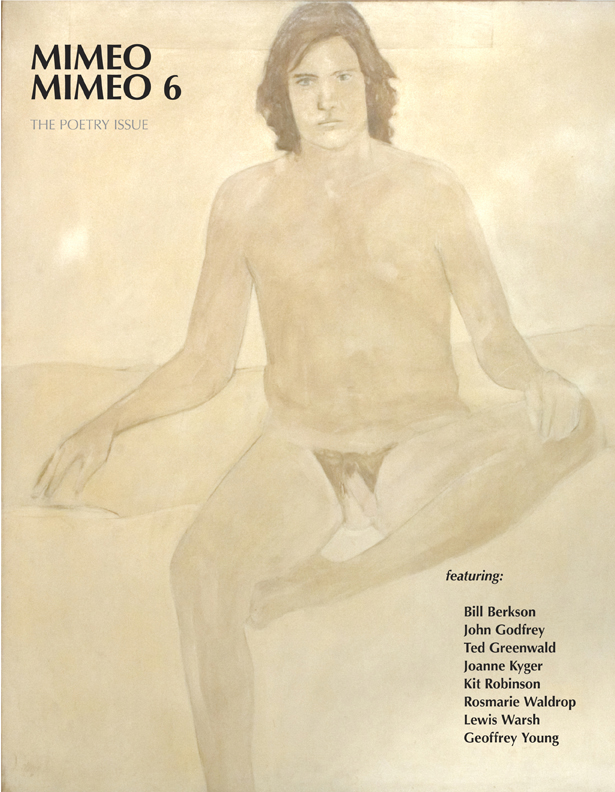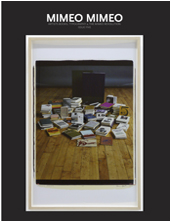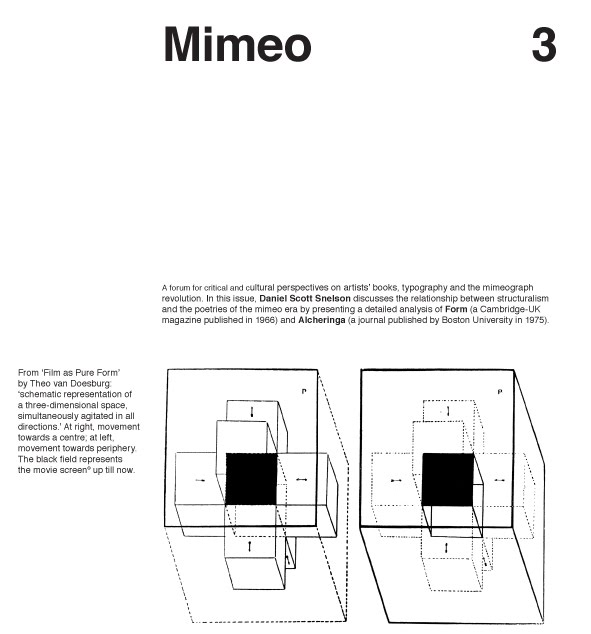The POP project was begun with the idea of cold calling
potentially interested and interesting people with the sales pitch of entering
into a correspondence. In a world
dominated by electronic social media, POP was decidedly lo-tech and seemingly
out of touch with current means of communication. I figured that if somebody got in touch with
me because of a POP publication, they must really have something to say. And urgently.
Well, Christopher Byck has something to say. He operates 48th Street Press,
which publishes chapbooks of “outlaw poets” as well as going full steam ahead
with a massive broadside project that in less than four years has issued around
4000 broadsides. Here is an idea of where
he is coming from (which you might think is tough to pin down since he travels
all over the world). The following
quotes come from an interview with Ben Smith of Horror, Sleaze and Trash:
The broadside project was partly inspired
by a poetry series that Nettelbeck published from 1980 to 1997, called, This
Is Important. These poetry pamphlets were 4" by 11" strips of
paper with poems on both sides, folded into a pocket sized reader; each held
four to six poems depending on length. They were modeled after religious
pamphlets you'd find on a bus, or the subway. In the 80s, Ginsberg and
Burroughs, who had largely gravitated away from the small presses, were still
submitting to Nettelbeck, along with countless other known (and unknown) poets.
He distributed these simple pamphlets wherever people would find them - gas
station bathrooms, laundromats, coffee shops, etc. The pamphlets were certainly
not 'high-art', but a method to spread poetry.”
My idea is similar. The broadsides are 8.5" by 11" and
printed, from a laser printer, on card stock paper of varying colors. Each poet
can submit as many poems as they like; generally I will pick two and print them
in a numbered edition of 20. The poet signs, numbers and distributes. They can
be given away to lovers, waitresses, strangers, at reading, compliments to a
book order, or sold for a buck by the poet. I ask that each poet sends me back
two broadsides, signed and numbered, to spark distribution and act as a record
of the project. This eliminates the need for me to distribute and allows to
poet to put a poem into the hands of a reader. They aren't letterpress, no
silken paper, just simple ink on card stock - words on paper - each touched by
the poet.
I printed nearly 1,100 in 2010, from Philadelphia, and
another 1,200 in 2011, from my current home in Caracas, Venezuela. I plan to
replicate the project in 2012. I spend about six months perusing online, small
press magazines, and chapbooks for what I consider fresh poets. Then, I send
off a request for poems. I try to capture a wide range of poets and styles.
There are some small press legends, such as John Bennett and A.D. Winans, along
with some comparatively new voices to the scene, like u.v. ray and Paul
Harrison. I also included some language and visual poets, like John M. Bennett
and Richard Kostelanetz. Broadsides have always acted as a 'commercial', if you
will, for poets to introduce their work to a reader. I hope my series carries
on the tradition.
I do not want to imprison 48th Street with a
label but Byck is intensely interested in getting the work of outlaw poets out
to general population. Byck describes
the Outlaw Poet as follows:
It is
difficult to describe an 'Outlaw Poet', mostly, I think, because so many claim
to be outlaws. The Kerouac and Bukowski traditions have been beat to hell. If a
poet is going to take that road, they had better be exceptional. I think ray
and Harrison tread that path and put a unique spin on the content. It's been
done, but they elevate the style, add a perspective, and breathe a bit more
into it. It's good for a poet to write about drinking, women (or men), and a
society that they largely feel disassociated with. However, an outlaw poet
needs to possess the unique gift of reporting what they experience in
such a way that it hits a reader, creates an image, and allows the reader to
share, or relate to the experience.
Here is a good idea of who and what we are talking
about: http://outlawlibrary.blogspot.com. The publications of 48th Street
are well represented here. This is a
remarkable archive compiled by Dave Roskos.
Check it out.
Byck got a hold of POP’s The Critical Writings of Douglas
Blazek from OLE. In the world of lo-fi
publications, a blind squirrel just might find a nut, and Byck has been more
than slightly touched by the work of Blazek.
He states, “It is impossible to follow the small presses and not see
Blazek's named referenced. I read a few,
albeit scant, online biographies and the introduction to James DenBoer's
bibliography of Blazek’s extensive work. There hasn't been enough written about Blazek,
which fueled my curiosity.”
Byck’s curiosity got the best of him yet again, and he sent
me a copy of Blazek’s The Song That Ends
Ends Our Singing, which 48th Street issued in 2012. It is a small collection in a simple chapbook
format, of poems that previously appeared in magazines, like Ecstatic Peace
Poetry Journal, Lummox Journal and Prism International. I am blinded by the supposed splendor of the
past so I have not seen these current incarnations of the Mimeo Revolution
spirit (duplicator), which is truly my loss and to my detriment as someone
interested in the history of the little magazine.
The Song That Ends is dedicated to Byck with these lines:
scavenger in the dumpster
Of the poetic past discovering
The secret of dangerous trash
Blazek hits home with me right there, but let’s be clear,
unlike the work published by POP, 48th Street is not an operation in
ancient archeology. These are not
recycled greatest hits. The Song That
Ends does not pluck poems from the dumpsters of dangerous trash in which Blazek
appeared in the 1960s. These are new
poems, which demonstrate Blazek’s current mode in poetry. As Byck states, “It is nearly impossible to
recognize the old Blazek in his new work. Essentially, he has re-written hundreds, if
not thousands of his previously published poems.” We can debate the merits of this new
direction in poetics all day but what interests me is that Blazek has not
abandoned the Mimeo Revolution vehicle as a means of distribution. He remains true to the DIY chapbook. And I think Byck has done him a solid in
return. The Song That Ends is a joy to
get in the mail, a joy to hold in the hand, and a joy to experience on the
page. Just like a 45.
Byck also sent me Corrugator by Paul Harrison, a Belfast
(Ireland) born poet living in “the world’s most isolated city, Perth, Western
Australia.” Harrison could have come
straight from the pages of OLE. His work
has the Meat School flavor. Last night I
had a bone marrow blood pudding with foie gras.
Likewise, Harrison’s work is a distillation of blood, guts, sweat, and
grit. Not to everybody’s taste, but for
those who savor the work of the Meat School, Harrison serves up in Corrugator a
collection worth sinking your teeth into.
Harrison
reminds me a lot of a poet I have written about before named John Thomas
Menesini, out of Pittsburgh. See http://mimeomimeo.blogspot.com/2011/12/john-thomas-menesini.html. What makes John different from Paul is that
John really gives you a sense of time and place: white trash, rural,
suburban Western PA from the 1980s, which I really like and know a little bit
about coming from Eastern PA. Harrison
is definitely on the edge, but he is also on the edge of the world in
Perth. I get little to no sense of that
place although he has clearly taken Belfast with him out there on the ledge. Yet at the same time the poems really do
capture a terrifying sense of the void, edge and abyss, a kind of internal
Perth. It would be interesting to me if
he connected that with the everyday sense (sights, sound, smell, etc) of
Perth. But that might be merely interesting
to me, not Harrison. In any case, Corrugator
is a harrowing act of perception and a raw act of self-examination.



 MIMEO MIMEO #8: CURATORS' CHOICE features 16 bibliophiles on 6 highlights from their personal or institutional collections. Contributors include Steve Clay, Wendy Burk, Tony White, Brian Cassidy, Thurston Moore, J.A. Lee, Michelle Strizever, Adam Davis, Michael Basinski, Joseph Newland, Alastair Johnston, Tate Shaw, Michael Kasper, Steve Woodall, Molly Schwartzberg, Nancy Kuhl, James Maynard, and the Utah posse (Becky Thomas, Marnie Powers-Torrey, Craig Dworkin, Emily Tipps, Luise Poulton, & David Wolske)
MIMEO MIMEO #8: CURATORS' CHOICE features 16 bibliophiles on 6 highlights from their personal or institutional collections. Contributors include Steve Clay, Wendy Burk, Tony White, Brian Cassidy, Thurston Moore, J.A. Lee, Michelle Strizever, Adam Davis, Michael Basinski, Joseph Newland, Alastair Johnston, Tate Shaw, Michael Kasper, Steve Woodall, Molly Schwartzberg, Nancy Kuhl, James Maynard, and the Utah posse (Becky Thomas, Marnie Powers-Torrey, Craig Dworkin, Emily Tipps, Luise Poulton, & David Wolske) MIMEO MIMEO #7: THE LEWIS WARSH ISSUE is the first magazine ever devoted in its entirety to poet, novelist, publisher, teacher, and collage artist Lewis Warsh. Warsh was born in 1944 in the Bronx, co-founded Angel Hair Magazine and Books with Anne Waldman in 1966, and went on to co-found United Artists Magazine and Books with Bernadette Mayer in 1977. He is the author of over thirty books of poetry, fiction and autobiography, the Director of the MFA program in Creative Writing at Long Island University in Brooklyn, and as you’ll soon discover, so much more. Includes an introduction by Daniel Kane, an interview conducted by Steve Clay, 10 new stories, 5 new poems, dozens of photographs and collages, and an anecdotal bibliography.
OUT OF PRINT
MIMEO MIMEO #7: THE LEWIS WARSH ISSUE is the first magazine ever devoted in its entirety to poet, novelist, publisher, teacher, and collage artist Lewis Warsh. Warsh was born in 1944 in the Bronx, co-founded Angel Hair Magazine and Books with Anne Waldman in 1966, and went on to co-found United Artists Magazine and Books with Bernadette Mayer in 1977. He is the author of over thirty books of poetry, fiction and autobiography, the Director of the MFA program in Creative Writing at Long Island University in Brooklyn, and as you’ll soon discover, so much more. Includes an introduction by Daniel Kane, an interview conducted by Steve Clay, 10 new stories, 5 new poems, dozens of photographs and collages, and an anecdotal bibliography.
OUT OF PRINT
 MIMEO MIMEO #6: THE POETRY ISSUE is devoted to new work by eight poets who have consistently composed quality writing that has influenced and inspired generations since the golden era of the mimeo revolution. Contributors include Bill Berkson, John Godfrey, Ted Greenwald, Joanne Kyger, Kit Robinson, Rosmarie Waldrop, Lewis Warsh, and Geoffrey Young. Cover art by George Schneeman.
OUT OF PRINT
MIMEO MIMEO #6: THE POETRY ISSUE is devoted to new work by eight poets who have consistently composed quality writing that has influenced and inspired generations since the golden era of the mimeo revolution. Contributors include Bill Berkson, John Godfrey, Ted Greenwald, Joanne Kyger, Kit Robinson, Rosmarie Waldrop, Lewis Warsh, and Geoffrey Young. Cover art by George Schneeman.
OUT OF PRINT


 MIMEO MIMEO #3: THE DANNY SNELSON ISSUE examines the relationship between structuralism and the poetries of the mimeo era by presenting a detailed analysis of Form (a Cambridge-UK magazine published in 1966) and Alcheringa (a journal published by Boston University in 1975), two exemplary gatherings that illuminate the historical, material and social circumstances under which theory informed art (and vice versa) in the early works of some of today's most celebrated experimental writers. Also includes a special insert, The Infernal Method, written, designed and printed by Aaron Cohick (NewLights Press).
OUT OF PRINT
MIMEO MIMEO #3: THE DANNY SNELSON ISSUE examines the relationship between structuralism and the poetries of the mimeo era by presenting a detailed analysis of Form (a Cambridge-UK magazine published in 1966) and Alcheringa (a journal published by Boston University in 1975), two exemplary gatherings that illuminate the historical, material and social circumstances under which theory informed art (and vice versa) in the early works of some of today's most celebrated experimental writers. Also includes a special insert, The Infernal Method, written, designed and printed by Aaron Cohick (NewLights Press).
OUT OF PRINT
 MIMEO MIMEO #2: features Emily McVarish on her artist's book Flicker; James Maynard on poet Robert Duncan's early experiences as an editor and typesetter; Derek Beaulieu on the relationship between the influential Canadian poetry journal Tish and Black Mountain College; and an extensive interview with Australian poet and typographer Alan Loney conducted by Kyle Schlesinger. Cover is by Emily McVarish.
OUT OF PRINT
MIMEO MIMEO #2: features Emily McVarish on her artist's book Flicker; James Maynard on poet Robert Duncan's early experiences as an editor and typesetter; Derek Beaulieu on the relationship between the influential Canadian poetry journal Tish and Black Mountain College; and an extensive interview with Australian poet and typographer Alan Loney conducted by Kyle Schlesinger. Cover is by Emily McVarish.
OUT OF PRINT


0 comments:
Post a Comment